Brain-based Teaching Tips for Your Homeschool
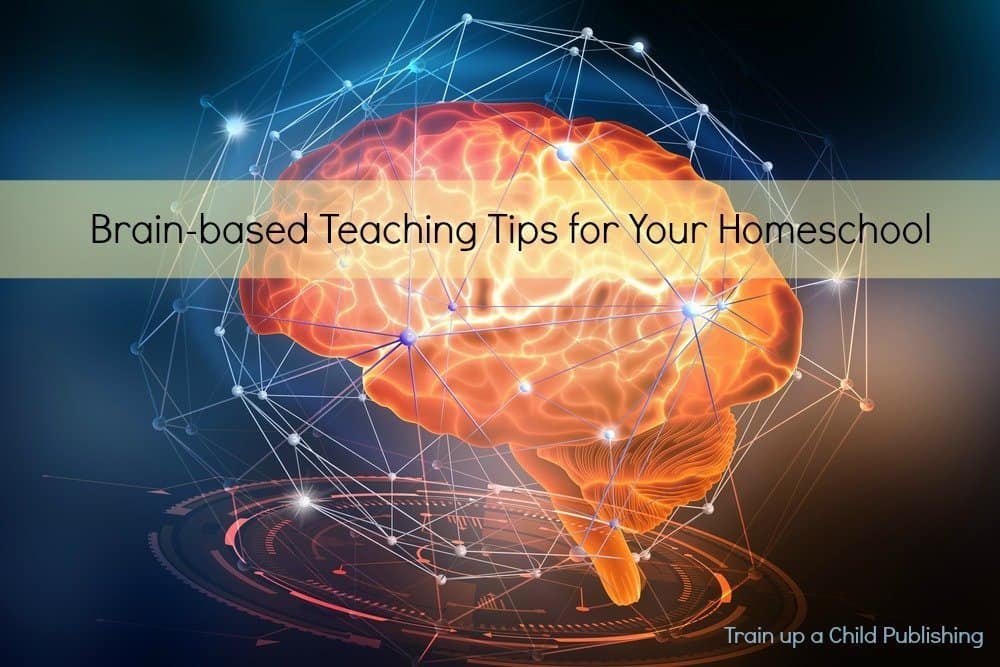
Have you tried terms “brain-based teaching” and ”brain-based learning” in your homeschool?
There’s a lot of buzz about this in the public and private school systems, so why not in homeschooling circles? I know you want to do everything you can to help your kids remember what they are hearing and doing, so let’s take advantage of recent research and teach how kids’ brains learn. So to that end, this is the first post out of four where I share brain-based teaching strategies for homeschooling.
I admit it. I geek out over learning research.
Especially when I’ve seen the results of putting it into practice.
Think about it. If your homeschooling becomes more effective in less amount of time, then it’s going to free up time to devote to other things, right?
I believe you can bring your kids’ homeschool education to life and still balance the rest of your responsibilities — and using brain-based teaching for homeschool is one way to help you do it!
So what exactly is “brain-based teaching, ” you ask? This is teaching in such a way that it “activates” your students’ brains, helps them engage, focus, and retain what they’re learning.
- Have you tried terms "brain-based teaching" and "brain-based learning" in your homeschool?
- Brain-based Teaching Tip #1 for homeschool: Help your child have a vision that he or she can succeed.
- How can you help your students believe they can be academically successful?
- Believing in your kids
- How do you use affirming, confidence-building words with your students, and how can your words instill confidence that they can succeed?
- Helping your children set goals a little past what they are comfortable with and give them the tools to reach them.
- Make your homeschool a safe place for your students to "fail," or not do as well as you or they expected.
- What if you are the one struggling to think positively?
- Providing a safe environment for learning
- Here's an example of how to be positive with a student who doesn't feel he's a good writer
- Here are more examples of what you could say to build up a student who didn't do well on something.
- When your student is having trouble getting work done, involve him/her in strategizing ways to work on an issue.
Brain-based Teaching Tip #1 for homeschool: Help your child have a vision that he or she can succeed.
According to Dr. Eric Jensen of Jensen Learning, research shows that one of the most important indicators of school success is what the student believes about his potential for success. [This principle is based on the following research: Hattie, J.A. (2009). Visible Learning. Routledge, London, UK.]
Does that surprise you that what your student believes about his potential for success is more important than… his vocabulary? Math scores? Reading level?
It surprised me, too!
So, if your student’s belief in his ability to learn is crucial to his success, then one of your most important jobs as his teacher is to help your student believe that he can succeed.
Read that sentence again!
Maybe your students love to learn and are already confident in the academic abilities. Or maybe you have a student or two who struggles.
You are reading this post for those children.
Disclaimer: I’m not directly discussing chidlren who learn differently in this post. I’m not qualified to know how much this topic could influence a child who is differently-abled. It can’t hurt, though!
How can you help your students believe they can be academically successful?
Here are ways you can use brain-based teaching to help your children believe they can be successful:
We’ll take these one at a time.
Want to learn more about homeschooling with teaching strategies aligned with your kids brain?
Click on the graphic below to download your checklist!
Believing in your kids
One of the most fascinating research findings on the brain is that it can change. This is called neuroplasticity.
Hear this– our brains, our “level of intelligence,” is not fixed.
Even though for many years we were taught that you had the intelligence you were born with (or developed by about age three).
We NOW know that we can improve our intelligence and abilities, even into adulthood!
Think of that!
And if we can do this as adults, you know your children’s brainpower and intelligence aren’t set in stone, either.
So don’t give up on your kids! (Not that you would.)
Always remind yourself, when you son fails a math test, again, or your daughter can’t write a coherant paper to save her life, that everyone matures in different areas at different times.
And part of your children overcoming these issues is you believing that they can. We help our children form their ideas of their ability.
What we say to them, how we treat them when they don’t do as well as we’d like… you, Mom and Dad, more than anyone else, have the power to help your children believe that they can succeed.
In other words, don’t let your thoughts default to, he’s lousy at math, or she can’t write a lab report that makes any sense.
And if research shows that what they think of their ability shapes their ability, you need to do everything you can to help them see themselves as successful. This is by far the most important brain-based teaching tip for your homeschool.
But how do you do that?
How do you use affirming, confidence-building words with your students, and how can your words instill confidence that they can succeed?
You pay attention and praise your child in specific terms when he does something noteworthy. You base your praise on real information, making it more believable to your child and less like, “you are my mom, so you have to say that.”
specifically point out the positives of your child’s behavior
You might be used to saying, “Good job!” to your new reader as he’s learning to decode words and learn sight words. But can you be more specific?
What about when a student does well on a test?
When you praise your children for specific, positive efforts, you help them make the connection between their efforts and their successes.
Helping your children set goals a little past what they are comfortable with and give them the tools to reach them.
By helping your students set academic goals a little beyond what they think they can do and helping them reach those goals, you are reinforcing that they can do hard things and be successful. Essentially, they prove to themselves that they can do more than they thought they could.
For a younger child, this might just be learning to write a solid paragraph. For an older student, this could be a large project with several different parts.For a high school student, this could be writing a research paper for the first time.
In all of these examples, you would help your child by breaking the task down into small steps and set a deadline for each step.
Work together with your middle and high school students, but let your high school student take this over at some point.
And once your high school student is doing that himself… like Ronald Reagan so aptly said…Trust, but verify.
Encourage persistence, and praise your kids like crazy for their hard work when they reach their goals! Then slowly lift the bar.
Don’t discourage your students, but don’t be afraid to challenge them a bit, either. Accomplishing these difficult tasks by their hard work will build and reinforce their self-confidence. This is what we’re going for!
Editor’s note: this post contains affiliate links. Should you buy something using one of these links, we could make a small commission on your purchase, at no extra cost to you. Thanks for supporting us in this way!
Click the link below to learn more about teaching with strategies aligned with your children’s brains.
Make your homeschool a safe place for your students to “fail,” or not do as well as you or they expected.
Help your kids to know that everyone makes mistakes, and it’s okay for them to make mistakes. Don’t shame them.
This may take a shift in attitude and behavior on your part. For example, were you met with disappoint or disgust as a child when you didn’t do well in school? If so, it could be hard not to react the similarly, especially if you believe your child wasn’t doing his best.
You certainly can deal with the child’s showing little effort, but shaming isn’t going to be productive. Ever.
Unfortunately, we all bring a little or a lot of baggae with us into parenting and homeschooling. That’s okay. We are all learning.
Remember that your students’ brains are still in the process of maturing, and you can help them develop more of a “I’m still learning, not perfect” mindset by the way you deal with less-than-successful outcomes.
What if you are the one struggling to think positively?
If you’re the one struggling to think positivly about your kids, let alone speaking that way, that’s okay.
Are you willing to learn how to think more positively toward your kids and yourself? Your brain has neuroplasticity, too!
This is what the world calls “mindset” these days. It boils down to this; what we tell ourselves influences our behavior.
For example: if you believe you’re a bad teacher, you might be a bad teacher. Unless you are willing to learn more about teaching and learn to think differently about your ability.
If we don’t accept that anything could ever change, then we are closed off to learning more. But you can learn more and become a better teacher. You can learn to think positively about that one child that drives you crazy. You just don’t know how to do it yet.
If you want to learn more about changing how you think and helping your kids do the same, I suggest you read the book Mindset, by Carol Dweck. Confession: when I first heard the term “mindset,” I thought it a bit “woo.” Now that I’ve investigated and read the book, I have changed my thinking. Now, I relate “mindset” to Philippians 4:8. We tend to falsely trash ourselves, rather than celebrating who we are in Him.
If you struggle with constant negative thoughts spiralling out of control… this book may be for you. It will help you understand the importance of your thoughts about yourself, others, and about life in general. As I said, not only can this book help you look at yourself, and life more positively, this will give you the tools to teach your children how to do that as well.
This is a gift that keeps on giving!
Providing a safe environment for learning
Learning to look at the positives of situations instead of the negatives, can help you provide a safe environment for learning.
A place where it is okay not only not to be perfect, but it’s also okay to blow it, as long as your child is trying.
Here’s an example of how to be positive with a student who doesn’t feel he’s a good writer
Let’s say one of your newer writers attempted to write a report or essay about a U.S. president. He made an effort, but the outcome needed more than one revision to be a decent paper.
Here are more examples of what you could say to build up a student who didn’t do well on something.
When your student is having trouble getting work done, involve him/her in strategizing ways to work on an issue.
I had one child that really didn’t care for Spanish. If you have a child that doesn’t like a subject, maybe this would work for you:
We brainstormed this issue together when we were by ourselves, after our homeschool hours had finished for the day. This is what we came up with:
Since this child was highly motivated by lunch, he dived in and got his work done. Going over it together allowed him to narrate his lesson to me, reviewing and assimilating the information. (As well as helping him be accountable for getting it done.)
Doing it every day at the same time over a few weeks helped him start building the habit of sitting down and getting it done. And of course, praise and encouragment from me went a long way to help him keep this up.
When you believe in your students and they begin to believe in themselves through their own successes, that’s when the magic happens!
If you use brain-based teaching tips like this all-important first one of believing in your children and demonstrating that to them through your words, you’ll see more cooperation and motivation to learn, more engagement in homeschooling, and you’ll become more of a coach and cheerleader than a grouchy taskmaster.
You can do this!

Related Posts:
Teach your children to believe in themselves.
#3 Brain-based Teaching Tip #3: Turn Listeners into Learners by Priming Their Brain

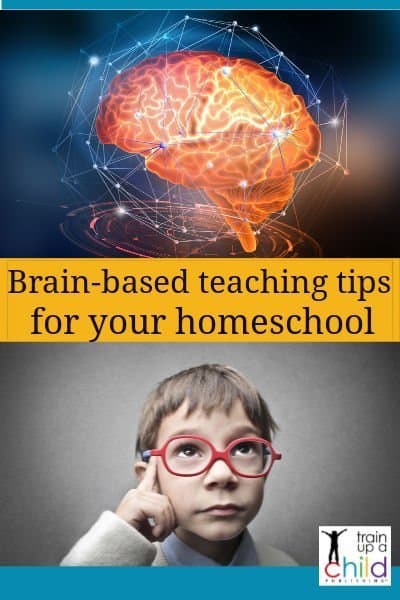
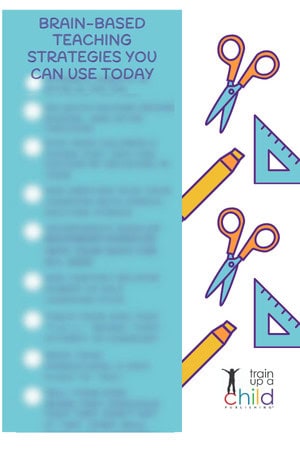

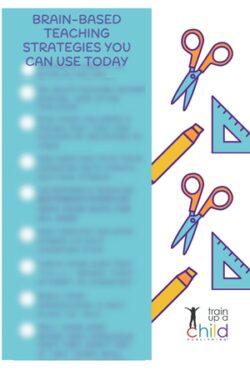

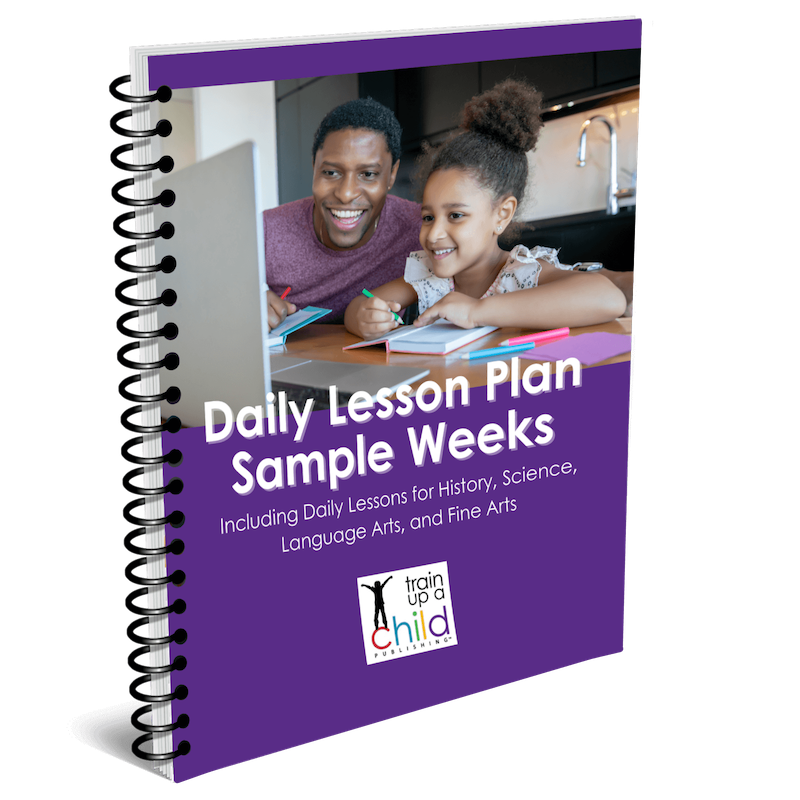
This is an awesome article, Dana! Thank you for posting! I’ve done a lot of research lately on brain-based learning through music education. Here’s an article I published about it — it’s called “Build Your Child’s Future NOW: How Child-Parent Play Enhances Brain Function.” https://www.mymusikathome.com/blogs/news/building-your-childs-future-now
Thanks for the compliment, Kathryn! The more reading I’ve done about brain-based learning and teaching, the more captivated I am. Do you feel the same? I’ll enjoy reading more about it from your perspective as well; thanks for including the link to your article and for stopping by!
Even though I don’t have a school-aged child yet, this is helpful information in general to apply as children are always learning! Thank you!!
Thank you, Aliece! Glad it was useful!
This is great, Dana, thanks! Very applicable in lots of other situations, too! Ö
Thank you, Rose!
“Everyone matures in different areas at different times.” Thank you for reminding me of that truth! It is easy to forget in the day to day challenge of teaching my 17 year old Asperger’s ADHD, dyslexic, dysgraphic student. Sometimes I wonder if we will ever get through high school-whew! And he has recently begun talking about home schooling college! Help! (just kidding :), we will do a college degree the same way we have done every other step, one day at a time). Thanks again for your wisdom Dana!
Oh, Shelly~ I’m so happy that it encouraged you! You do have your hands full. One day at a time is certainly the wise way to live. <>
This is what I need to learn and apply. Thank you. I will be checking out that book as well.
You’re welcome, Lisa! I think we all would do well to practice this kind of encouragement with our kids. Glad to have helped.